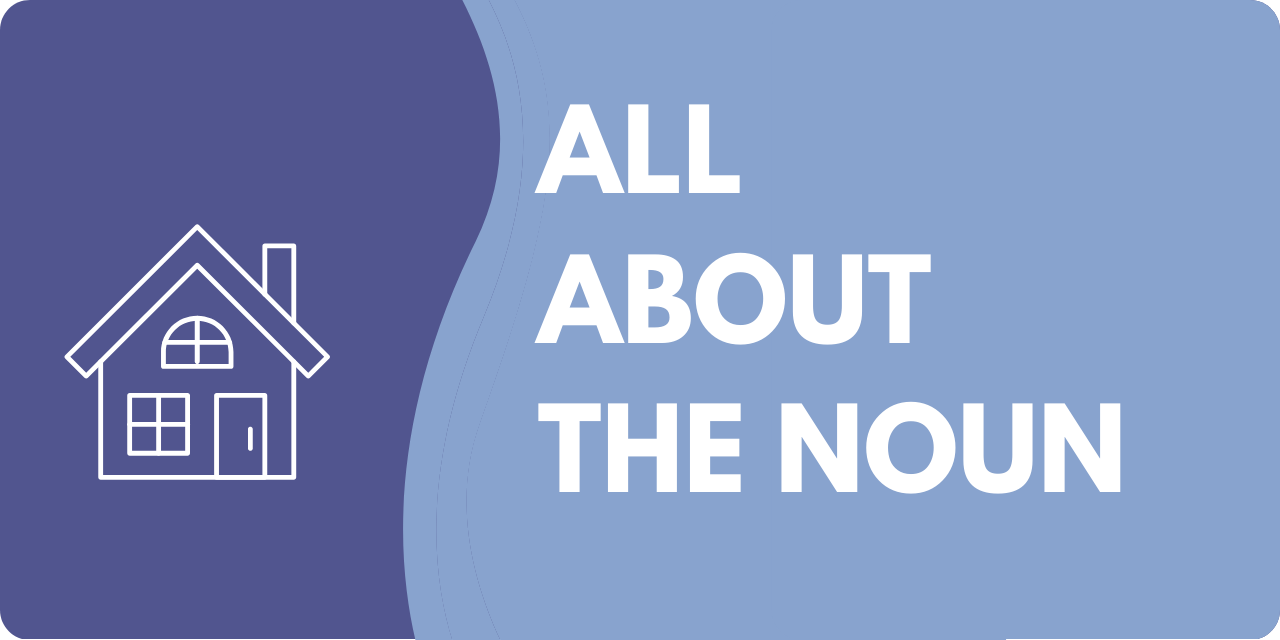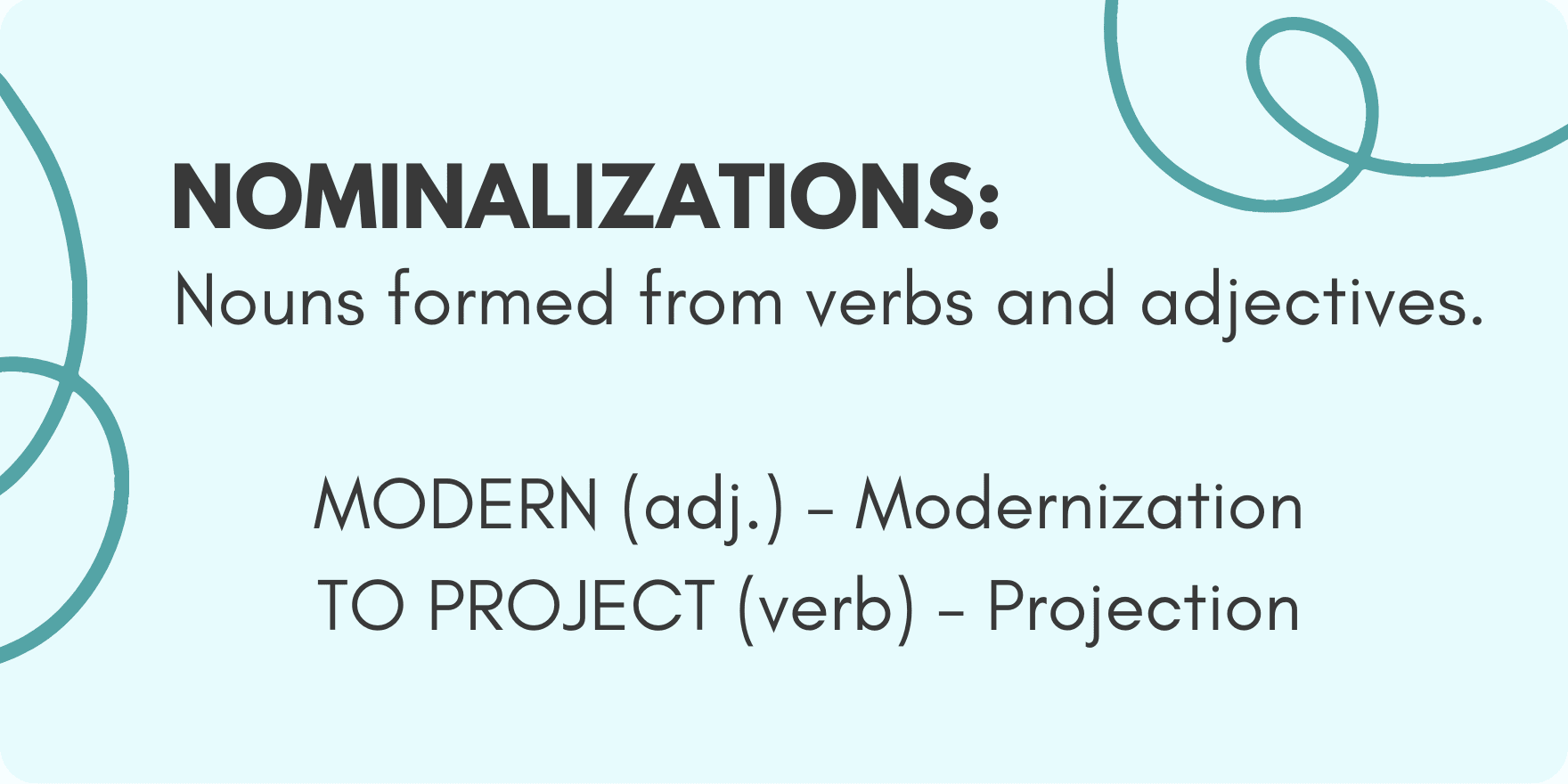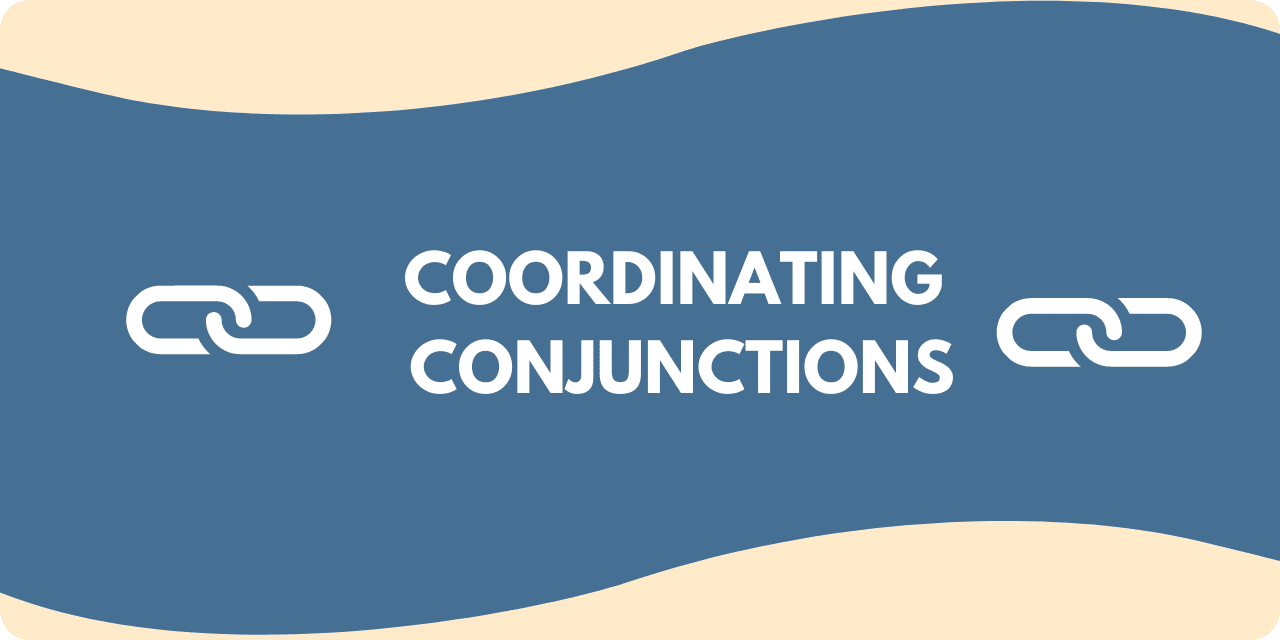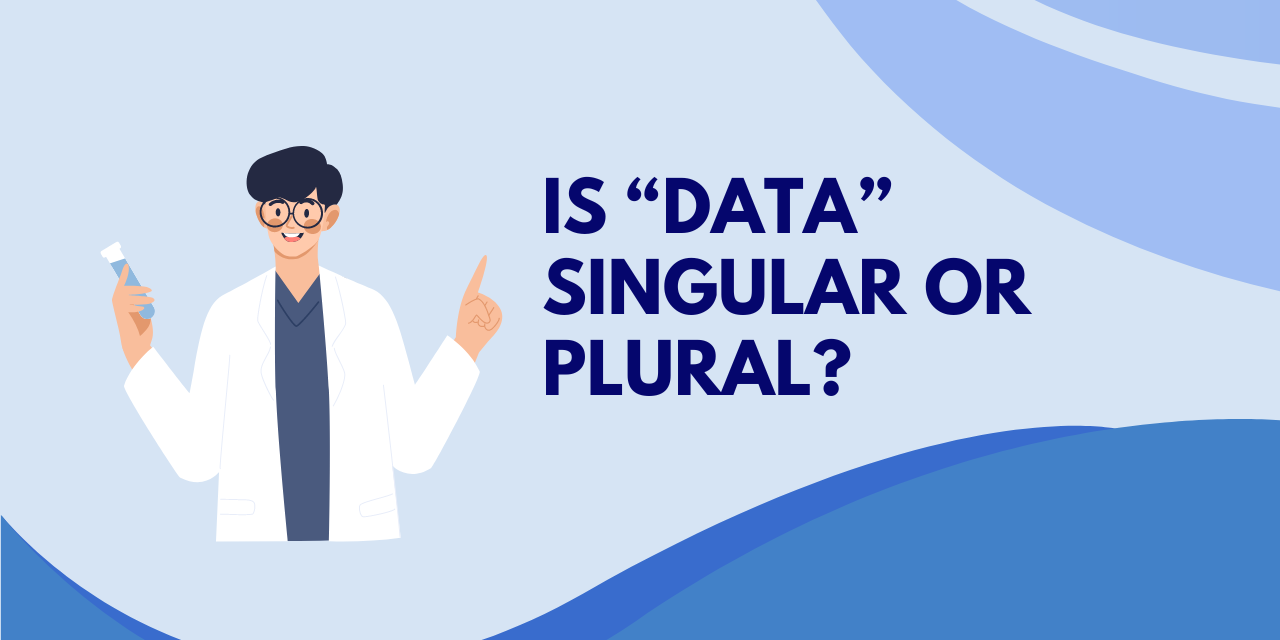An appositive is a noun or a noun phrase that is positioned next to another noun to rename or describe it in a different way. (The word appositive is from the Latin for to put near.)
An appositive is usually offset with commas, parentheses (round brackets), or hyphens.
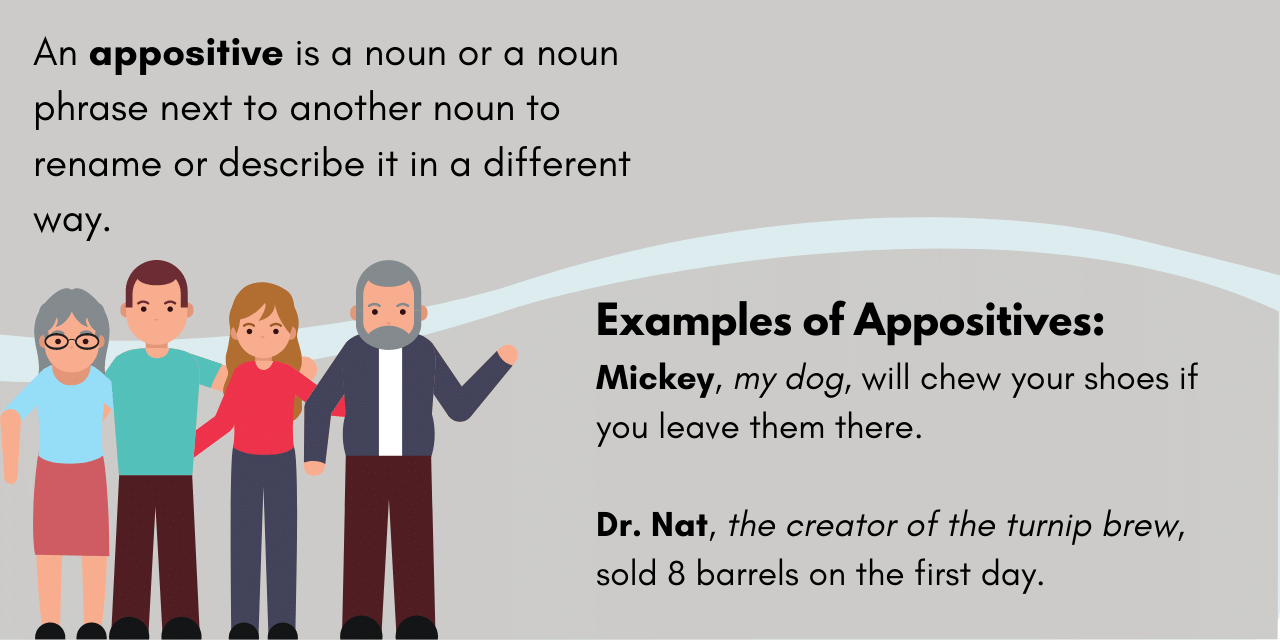
Simple Examples of Appositives
In the examples shown below, the appositive is in italics and the noun being renamed or described in a different way is bold.
Appositives are normally offset with commas.
- Mickey, my dog, will chew your shoes if you leave them there.
- Paul, my Army mate, caught a whelk while fishing for bass.
- Dr. Nat, the creator of the turnip brew, sold 8 barrels on the first day.
- The creature, a large lion with a mane like a bonfire, was showing interest in our group.
Appositives can be offset with parentheses (round brackets) or hyphens as well.
- Laura (my mate from school) won the lottery.
- For the last decade, prices in Alfriston–a small town only 25 minutes from London – have been rising.
Restrictive and Non-restrictive Appositives
A lot of times an appositive will simply provide extra information that could be removed without disrupting the meaning. However, there are times when removing them will leave you with a question.
- Paul won the lottery.
- Dr. Nat sold 8 barrels on the first day.
Paul who? Which Dr. Nat? 8 barrels of what?
In a situation when an appositive is essential for understanding, it’s called a restrictive appositive. When it is just removable extra information, it’s called a non-restrictive appositive. Non-restrictive appositives are always offset with commas, hyphens, or brackets. Restrictive appositives are usually offset with commas, hyphens, or parentheses (round brackets) but not always.
- My dog Mickey will chew your shoes if you leave them there.
- My Army mate Paul caught a whelk while fishing for bass.
When a restrictive appositive isn’t offset with punctuation (like in the examples above and the first example below), the sentence structure will be [generic term-specific term], rather than [specific term-generic term].
- My sister Dara might actually be an angel.
(This structure is [generic term-specific term].)
- Dara, my sister, might actually be an angel.
(This structure is [specific term-generic term].)
If an appositive shows up at the end of a sentence, it can be introduced with a colon.
- He demanded just one thing: respect.
(A comma or hyphen would also be acceptable.)
Examples
- Louis Ruiz, the oldest, shortest, and baldest of the three Ruiz brothers, barely looked up from his magazine when I entered the store.
- Manchester Memorial Hospital, the hospital where my daughter was born, is where they took her when she broke her leg.
It is common for appositives to be introduced with terms like namely, in other words, that is, or i.e.
- A clairvoyant is a person, commonly a woman, who has the power of seeing that which is invisible to her patron – namely, that he is a blockhead. – Ambrose Bierce, author
- There is but one law for all, namely, that law which governs all law, the law of our Creator, the law of humanity, justice, and equity – the law of nature and of nations. – Edmund Burke, Anglo-Irish statesman
(It is pretty rare, but appositives can be lined up. That’s called commoratio, deliberate repetition just for the effect.)
- Is it really fair for the government – i.e., the taxpayers – to provide people with cell phones? – Tim Griffin, actor
(Using an introduction for an appositive (i.e.) is especially useful when it may take your readers a couple moments to understand why it’s an appositive, namely, a term that describes the noun in a different way.)
The word appositive is from the Latin phrases ad and position which mean “near” and “placement.” An appositive will usually always be to the immediate right of the noun that it’s renaming or describing in a different way. Although, they do sometimes appear a little further away.
- Fear sprouted again, desperate fleeing fear, but there was nowhere to flee to.
This happens most frequently when the appositive comes after a colon.
- He knew what his wish will be: the ability to turn stone into gold.
Why Care about Appositives?
As a native English speaker, you’ll naturally be good at producing restrictive appositives (i.e., ones essential to the meaning), but non-restrictive ones (i.e., ones that just add extra information) are likely to come less naturally to you because it’s a more purposeful act to include them. If that is true for you, it’s something worth conquering because appositives are useful for providing engaging detail mid-sentence in a way that doesn’t destroy your sentence structure, and they can be useful for emphasis.
Here are two reasons to care about appositives:
1. Appositives are an efficient way to include information.
One great thing about an appositive is that it can be used to squeeze interesting information or details into your sentence without compromising the sentence structure.
- Thomas Edison, the man who invented the incandescent light bulb, the motion picture camera, and the phonograph, was a businessman who has been described as America’s greatest inventor.
- Prince William, son of Princess Diana and second in the line of succession to the British throne, wed Catherine Middleton on April 29th, 2011.
- Drew Barrymore, the granddaughter of legendary actor John Barrymore, co-founded her production company, Flower Films, In 1995.
If you were to do away with all the italicized text (i.e., the appositives) from the above examples, the sentences would still make sense.
2. They can be a way of showing emphasis.
An appositive can be utilized to create emphasis. When used for this reason, the appositive is often a reiteration of the original noun.
- This tale, this devastating tale, was full of cruel wars and unnecessary deaths
- It is the constant dread of fear, the fear of fear, that molds the face of a courageous man.
Another great way to show emphasis with an appositive is to put it at the conclusion of the sentence after a colon. To do this, you will need to intentionally structure your sentence to set the stage for the appositive (like setting up for a punchline).
- To win the gold you need just one trait: dedication.
(When an appositive is presented in this way, it’s called an emphatic appositive.)
- My favorite public speaker always talks about the entrepreneur’s trilogy: Heartset, Mindset, and skillset.
Want to sharpen your business writing skills? Discover our acclaimed online courses at syntaxtraining.com Whether you want to learn about taking taking meeting notes, become a master proofreader, master punctuation or tune-up your business writing skills, our courses are here to help you.



